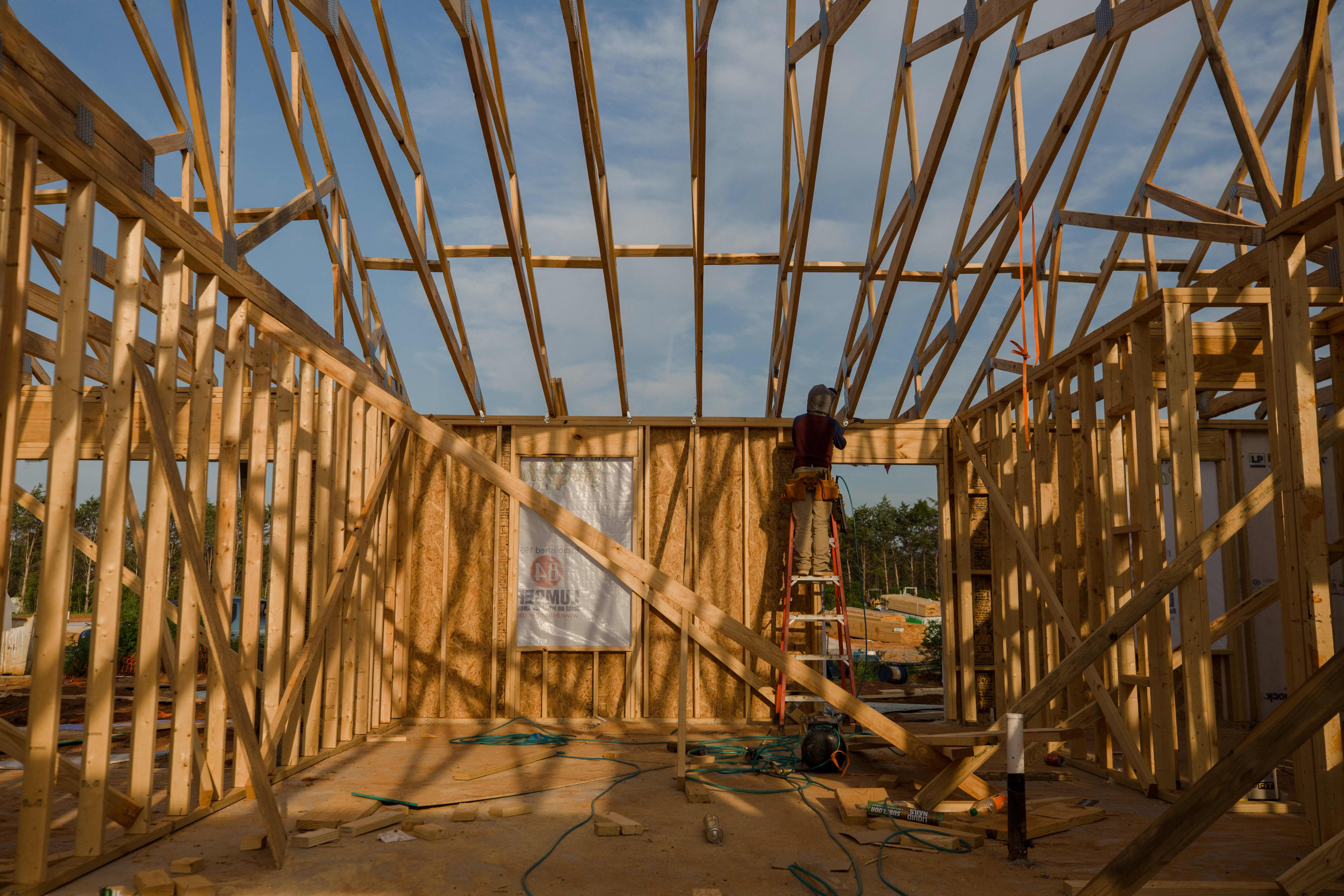The price of lumber on the future’s market has given up all of its gains for this year, falling by more than 50% in just the last few months. Homebuilders, homebuyers and homeowners looking to remodel, however, are not seeing savings yet.
Lumber prices hit a record high on May 7, at $1,670.50 per thousand board feet on a closing basis. That was more than six times their coronavirus pandemic low in April of last year.
The spike was due to sudden soaring demand and low supply both due to the pandemic. Saw mills closed at the start and did not ramp up production quickly enough to meet the new demand from builders and remodelers. Homebuyers and homeowners alike wanted more space, and that meant more lumber.
Now demand for remodeling is falling, as people spend more money on vacations instead. Homebuilders are still seeing strong demand, but they have slowed construction due to high costs. Saw mills have gotten back on line, but many are having issues finding enough labor.
Lower lumber prices are a welcome sign but not a reality yet on the retail side. Lumber prices are also still up nearly 100% from the spring of last year.
“As the price declines began grabbing headlines, the price of lumber packages quoted to builders held at record highs,” wrote David Logan, senior economist at the National Association of Home Builders. “In economics jargon, prices paid by builders—or ‘street’ prices—were ‘sticky.’ This dynamic is primarily due to dealers’ inventory carrying costs and potentially large differences between the price at which inventory is bought and sold.”
The price of lumber packages quoted to homebuilders is still at a record high, according to Logan. Retailers of course want to buy their product low and sell high, so they’re still selling the inventory they have at higher prices, despite what the futures market says. Also, given soaring demand and supply chain issues, their inventory is low anyway, and there is still demand, so they have no reason to lower prices. But that will change in the coming months.
“We are still in a price discovery mode,” said Michael Goodman, director of specialty products at Sherwood Lumber, a national wholesaler and distributor in Palmer, Massachusetts. Sherwood buys from mills in North American and Europe and ships directly to its customers.
Goodman said they are just now seeing a lot more product come to the market.
“Everyone is going to try to hold on as long as they can, but the market is going to find its way. Maybe in the end the price is higher because of inflation, but we are definitely in a housing boom now. That doesn’t seem to be going away,” said Goodman.
While the price of softwood lumber is coming down, the price of other wood products, like oriented strand board (OSB), which is a type of engineered wood product used for panels, is up 325% year over year and 500% from pre-pandemic levels, due to supply chain issues.
Steel mill products, used as inputs to steel building materials, jumped in price by about 70% in the first few months of 2021 and have yet to level off.
“Builders are contending with shortages of building materials, buildable lots and skilled labor as well as a challenging regulatory environment. This is putting upward pressure on home prices and sidelining many prospective home buyers even as demand remains strong in a low-inventory environment,” said Robert Dietz, NAHB’s chief economist.
— CNBC’s Lisa Rizzolo contributed to this article.
